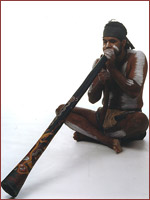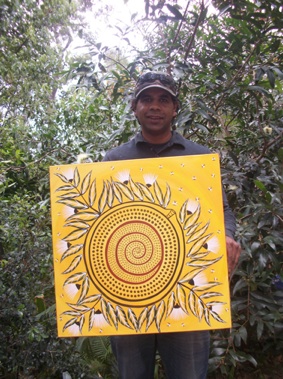Gaiya is one of the names used by the Gubbi Gubbi people of the Sunshine Coast for the native stingless bee. The bees can also be called guta or gila, possibly names for the three different species of native bee found in this area. Native bees have huge cultural significance to indigenous people from many parts of Australia, and have played a part in their culture for thousands of years.

Honey was highly prized and often given as gifts or traded as a valuable commodity. It was also used medicinally for ‘cleaning out the gut’. The honey produced by native bees is often known as ‘sugarbag’ and contains a lot of resins from native trees such as the eucalypts. There are only a few people producing it sustainably in harvestable quantities. It is a very rare and special honey and when eating this honey you are essentially tasting what indigenous Australians were eating thousands of years ago.
Some other terms from the Gubbi Gubbi language relating to native stingless bees include:
ga ‘ bai (noun) – honey of the light coloured native bee.
gila (noun) – honey of the dark coloured native bee.
gu ‘li (noun) – native beeswax.
Native beeswax is traditionally used in the sealing and caulking of artifacts and tools as well as the formation of mouthpieces for didgeridoos. The wax can be moulded when soft to form the desired mouthpiece for a didgeridoo then it will harden with time and keep it’s shape. It can be heated to reshape it if required.

Local representative of the Gubbi Gubbi people, Lyndon Davis, holding one of his paintings representing a native stingless beehive in cross section in a tree. The spiral in the centre represents the brood mass of Trigona carbonaria and the surrounding brown dots are the sugarbag honey pots.
Lyndon is the head dancer of the Gubbi Gubbi dance group as well as an accomplished artist and you can view some of his paintings on his website http://www.gubbigubbidance.com . His work often combines traditional and contemporary painting styles with fantastic results. He also runs workshops for school kids and those interested in learning more about Australian aboriginal culture.